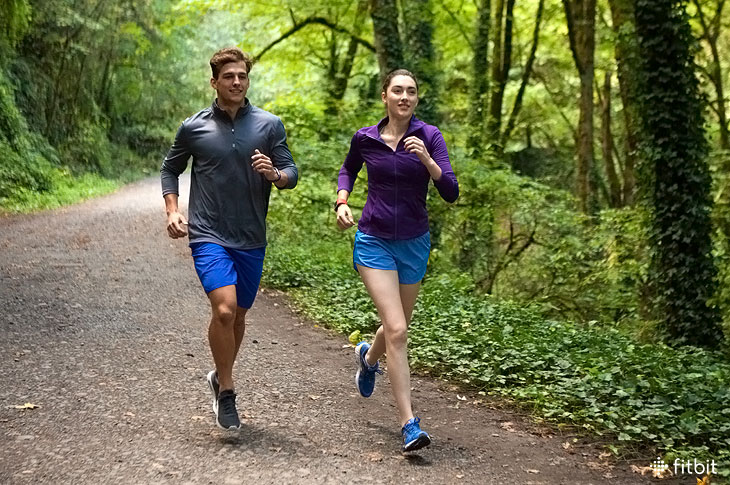
Science (and your mom) says getting out into nature is good for your soul—and your body. And while the leaves are changing and the temps are cooling, there’s no better time to take your runs to the trails. Running off road comes with added benefits, too. “Running itself typically works the fronts and backs of your legs, but trail running engages your muscles in different ways, because of the varied terrain,” says longtime run coach and champion ultrarunner Lisa Smith-Batchen. Here, she provides ways to keep your trail runs safe and fun.
Make Your Steps Count
Count your steps instead of your miles. “Trail running can take longer due to rolling terrain, so don’t expect to run your usual speed,” Smith-Batchen says. “Instead, set aside however much time you have, and then simply see how far you can go, and how many steps you can take. Aim to add 25 steps to each run, to build distance. It makes it feel much more doable, and it’s more fun.”
Tracking steps can boost your motivation, too. “When I set out to run across America, each day my goal was to go 50 more steps than the day before,” Smith-Batchen says. “It kept me going, and felt fun. You may not always be able to run faster, but you can always take more steps.”
Watch Your Step
Batches advises looking about five feet ahead of your steps, to see where you’re going, and to stay balanced. “You’ll want to constantly gaze just ahead. It’s like driving a car: You can glance to the side or behind you, but you always have to be mindful of what’s ahead,” Smith-Batchen says. “Perhaps most important: Don’t look where you don’t want to go—or else you could end up there. For example, if you look over your shoulder, you could trip,” she says.
Mind Your Form
“The main difference between trail running form and road running form is you need to pick up your feet,” Smith-Batchen says. “You can’t get away with shuffling, or you could hit a root or rock and trip.”
Smith-Batchen also advises leaning slightly forward, whether you’re heading uphill or downhill. “It keeps your weight centered over your pelvis,” she says. “Your body goes where your weight goes. For example, if you lean back when running downhill, your feet can slip out from under you and you’ll fall. And if you run on the flats completely upright, you’ll just go up and down, which can be more jarring on joints.”
It’s also a good idea to “run from your core, and not your legs,” says Smith-Batchen. “Focus on engaging your core with each step. It will help stabilize your body, which is important over varied terrain.”
Finally, think of your arms as sails. “You don’t want them pinned too close to your body, but you don’t want them flying in the wind, either,” Smith-Batchen says. “Use them for balance.”
Gear Up
You don’t need trail shoes to get off the pavement, but if you decide you want to run off road regularly, it’s wise to invest in a pair. “Trail shoes are usually stiffer, to offer more stability over rocks and uneven terrain, and they have grippy treads on the soles,” Smith-Batchen says. Some trail shoes also have toe bumpers, to protect your feet from errant stones.
Build Your Balance
“I always include balance exercises in my students’ workouts, but it’s especially helpful if you’re new to trail running, as it can help prepare you for variable terrain,” Smith-Batchen says. “One favorite: Take off your shoes at the end of a workout or regular run, and run barefoot (or with socks) forwards and backwards in grass for a few minutes. It will help strengthen the ligaments and tendons in your ankles and feet. If you don’t have grass nearby, practice standing on one leg for a minute on each side. Once you’ve mastered that, bend forward and back up again. Skipping rope—especially on one foot—is also an excellent option, as it mimics the need to pick up your feet with trail running.”
Smith-Batchen suggests performing these exercises two to three times a week to build extra trail-friendly strength.
This information is for educational purposes only and is not intended as a substitute for medical diagnosis or treatment. You should not use this information to diagnose or treat a health problem or condition. Always check with your doctor before changing your diet, altering your sleep habits, taking supplements, or starting a new fitness routine.

If you have questions about a Fitbit tracker, product availability, or the status of your order, contact our Support Team or search the Fitbit Community for answers.
Please note: Comments are moderated and may not appear immediately after submission.